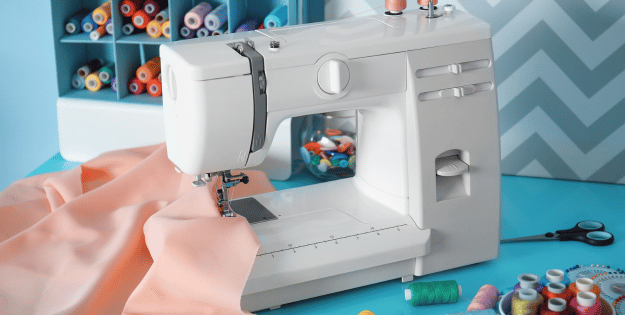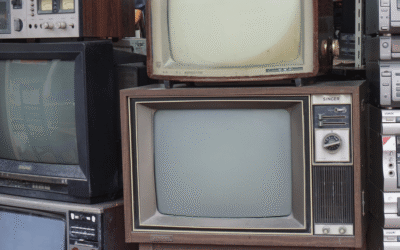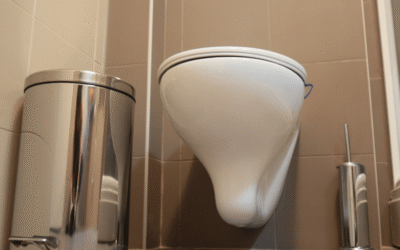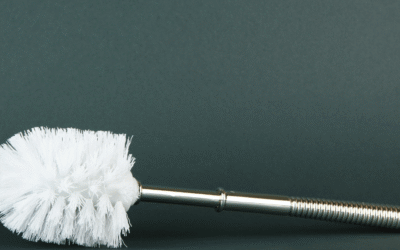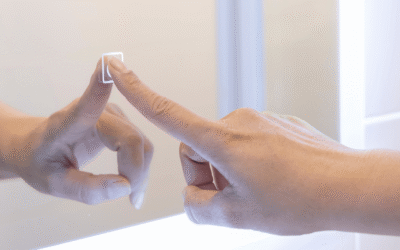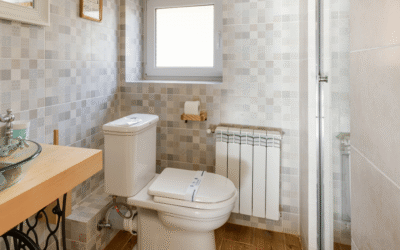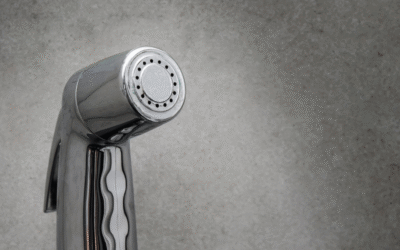Sewing machines have come a long way from their humble beginnings, evolving into versatile tools that cater to both beginners and seasoned professionals. Whether you’re looking to mend clothes, create intricate designs, or start a new hobby, finding the best sewing machine can make all the difference. With countless options on the market, choosing the right one can be daunting. Key features like automatic needle threading and an automatic thread cutter enhance ease of use for both beginners and experienced users. Mastering basic stitches is crucial for beginners, as these fundamental stitches impact the overall sewing experience.
This guide will help you navigate through the top sewing machines available today. It focuses on key features, ease of use, and value for money, ensuring you make an informed decision. From basic models perfect for novices to advanced machines for experienced sewers, there’s something for everyone. For those purchasing their first sewing machine, consider user-friendliness and necessary accessories to facilitate a smooth sewing experience.
- Feature Versatility: Look for sewing machines with multiple stitch options, automatic or one-step buttonholes, effective feed dogs, and built-in lights for better visibility and functionality.
- Sewing Machine Types: Understand the different types of sewing machines—computerised, mechanical, overlocker, and electronic—to select one that matches your project complexity and user proficiency.
- Essential Features: Automatic needle threaders, built-in thread cutters, and walking feet are must-have features that significantly enhance the ease of use and stitching quality.
- Buying Considerations: Evaluate the size, weight, number and types of stitches, and included accessories to ensure the sewing machine meets your specific needs.
- Care and Maintenance: Regularly clean, oil, and perform maintenance on your sewing machine. Troubleshoot common issues like skipped stitches and fabric jams to ensure longevity and optimal performance.
Top Sewing Machines
Key Features to Consider
When selecting from the best sewing machines, evaluating various features ensures the right choice for different projects.
Stitch Options
The number and variety of stitches are vital. Machines with multiple stitch options, including basic stitches like straight and zigzag, as well as decorative stitches, offer more versatility in projects ranging from basic mending to intricate designs.
Buttonhole Types
Different buttonhole types enhance garment creation. Machines that provide automatic or one-step buttonholes ensure uniformity and professionalism. Multiple buttonhole options cater to various clothing and accessory styles.
Feed Dogs and Stitch Speed
Effective feed dogs and variable stitch speeds are crucial. Strong feed dogs assist in fabric movement, while adjustable stitch speed accommodates different fabric types and user skill levels, enhancing efficiency and control.
Lighting Your Workspace
Adequate lighting is essential. Machines with built-in lights provide better visibility, reducing eye strain and improving accuracy, especially in detailed work or when sewing darker fabrics.
Weight and Durability
Consider the machine’s weight and materials. Lightweight machines are easier to transport, while durable construction ensures longevity and reliability. Heavy-duty models better withstand frequent use.
Local Servicing Options
Available local servicing helps maintain the machine’s functionality. Access to servicing centres or skilled technicians ensures quick repairs and parts replacements, keeping the machine in optimal condition.
Types of Sewing Machines
Understanding the types of sewing machines helps in selecting the best sewing machine for one’s needs. A home sewing machine is particularly beneficial for those without a dedicated sewing space, offering ease of use and mobility. A versatile sewing machine is appealing because it can handle a wide range of projects, from quilting to garment making, and can work with heavier fabrics.
Computerised vs. Mechanical
Computerised machines offer advanced control with programmable stitch options, automatic stitch tension adjustments, and built-in designs, making them ideal for intricate projects and easy to use for beginners. Mechanical sewing machines provide basic stitch options, smooth operation, powerful motors, and are easier to use and maintain due to their user-friendly features. Choose based on the complexity of projects and user proficiency.
Overlocker Sewing Machines
Overlocker machines specialise in sewing seams, trimming excess fabric, and finishing edges simultaneously. They ensure professional-looking hems and seam finishes, particularly for knit fabrics. They’re essential for those prioritising clean, durable edges.
Manual vs. Computerized
Manual machines focus on straightforward functionality and durability, often preferred for beginners. A computerised sewing machine, on the other hand, offers advanced features tailored for both beginners and experienced sewists, such as a variety of stitch options, automatic functions like thread cutting, and intuitive controls that enhance usability and efficiency in sewing projects. Select according to the user’s skill level and project requirements.
Electronic Sewing Machines
Electronic machines balance ease of use and flexibility. They offer a variety of stitch options, speed control, and some automation, making them suitable for both everyday use and more complex projects. They provide a middle ground between mechanical simplicity and computerised precision.
Must-Have Features
Choosing among the best sewing machines requires understanding vital features that improve functionality and ease of use. Considering the range of presser feet included with a machine is crucial, as different presser feet are designed for specific tasks like buttonholes, zippers, and decorative stitches. The following attributes significantly enhance the sewing experience. Ensuring the presser foot is properly engaged is essential for maintaining correct tension and avoiding common beginner mistakes.
Automatic Needle Threader
An automatic needle threader reduces strain and saves time. This feature is beneficial for those who struggle with threading needles manually, making the process efficient and accessible.
Built-in Thread Cutter
A built-in thread cutter offers convenience by eliminating the need for additional tools. This feature enhances workflow by enabling users to cut threads swiftly, maintaining a continuous sewing process.
Walking Foot
A walking foot is essential for handling multiple layers of fabric or difficult materials. It improves fabric feeding, ensuring even stitching and preventing slippage, which is especially useful for quilting projects.
How to Shop for Sewing Machines
When shopping for the best sewing machines, consider key factors and features to make an informed decision.
Size and Weight
Evaluate the sewing machine’s size and weight. For frequent travel, choose a lightweight model. A heavier machine offers stability and durability.
Number and Types of Stitches
Examine the number and types of stitches. Machines with varied stitch options cater to different projects. Basic, decorative, and stretch stitches enhance versatility.
Accessories and Features
Check included accessories and features. A stable sewing table is essential for heavier sewing machines that are not easily transportable. Look for automatic needle threaders, built-in thread cutters, and walking feet. These enhance usability and efficiency, especially for complex projects.
Care and Maintenance
Proper care and maintenance ensure longevity and optimal performance of sewing machines. Regular upkeep minimises issues and keeps machines running smoothly.
Regular Maintenance Tips
Clean the machine’s bobbin area and feed dogs after every use to avoid lint buildup. Oil the machine following the manufacturer’s instructions to keep it lubricated. Replace the needle after 8-10 hours of use to ensure sharpness, especially on thicker fabrics.
Troubleshooting Common Issues
Identify common sewing machine problems to stay proactive about maintenance. For issues like skipped stitches, rethread the machine and check the needle’s condition. If the fabric jams, ensure the correct tension settings. Regularly check the bobbin and its housing to prevent misalignment and threading issues.
Conclusion and Top Picks
Choosing the best sewing machine depends on individual needs and project requirements. With a multitude of options available, it’s crucial to focus on essential features like stitch variety, buttonhole types, and adjustable speeds. Considering factors such as weight, durability, and local servicing options can also make a significant difference.
Whether opting for computerised, mechanical, or overlocker machines, understanding their unique benefits helps in making an informed decision. Must-have features like automatic needle threaders, built-in thread cutters, and walking feet enhance usability and efficiency. Regular maintenance ensures longevity and optimal performance, making sewing a more enjoyable and productive experience.
What are the key features to consider when selecting a sewing machine?
When selecting a sewing machine, consider that most sewing machines come with a variety of stitch options, types of buttonholes, effective feed dogs, adjustable stitch speeds, and adequate lighting. Also, assess the machine’s weight, durability, and the availability of local servicing options.
How do computerised sewing machines differ from mechanical ones?
Computerised sewing machines offer programmable stitch options and built-in designs, making them suitable for intricate projects. Mechanical machines provide basic stitch options, are easier to use, and require less maintenance.
What is an overlocker machine, and why is it useful?
An overlocker machine sews seams, trims excess fabric, and finishes edges simultaneously. Certain models also offer capabilities for machine embroidery, making them versatile for various sewing projects. It’s essential for achieving professional-looking hems, particularly in knit fabrics, ensuring clean and durable finishes.
How important is an automatic needle threader in a sewing machine?
An automatic needle threader is very important as it reduces eye strain and saves time, especially helpful for users who find manual threading challenging.
Why should I consider the weight and size of a sewing machine?
Considering the weight and size is crucial, especially if you need to transport the machine frequently. Lightweight models are easier to carry, while heavier models often offer better stability and durability.
What maintenance is necessary for sewing machines?
Regular maintenance includes cleaning the bobbin area and feed dogs after each use, oiling according to the manufacturer’s instructions, and replacing the needle after every 8-10 hours of use.
How can I troubleshoot common sewing machine issues?
For skipped stitches, rethread the machine. Check tension settings if fabric jams occur. Regularly inspect the bobbin and its housing to prevent misalignment and threading problems.
What type of sewing machine is best for beginners?
A mechanical sewing machine is often best for beginners due to its simplicity, ease of use, and lower maintenance compared to computerized models.
Why is a walking foot beneficial for sewing machines?
A walking foot improves fabric feeding for multiple layers or difficult materials, ensuring even stitching and preventing slippage. It is especially beneficial for quilting projects.
How do the stitch options available on a sewing machine affect its usability?
Varied stitch options cater to different projects, including basic, decorative, and stretch stitches, increasing the machine’s versatility and usability for a wide range of sewing tasks.

